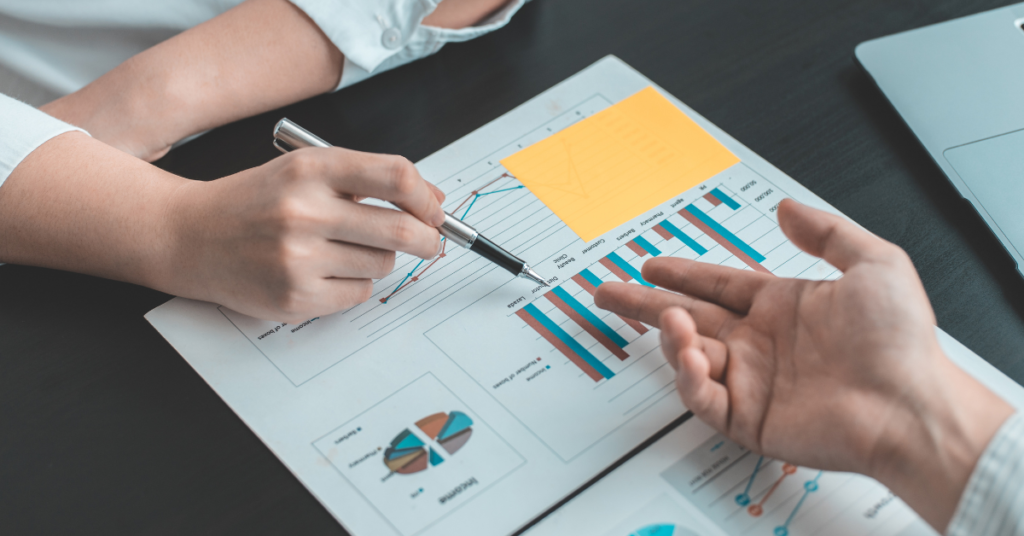Exploring Business Analytics: Examples and Applications
In today’s rapidly evolving business landscape, data-driven decision-making has become crucial for success. This is where business analytics comes into play. Business analytics involves the exploration, analysis, and interpretation of data to gain insights that can drive strategic decisions, optimize processes, and enhance overall business performance. In this article, we’ll delve into various examples of business analytics and highlight their significance across different industries.
Table of Contents
- Introduction to Business Analytics
- Types of Business Analytics
- 2.1 Descriptive Analytics
- 2.2 Diagnostic Analytics
- 2.3 Predictive Analytics
- 2.4 Prescriptive Analytics
- Real-world Examples of Business Analytics
- 3.1 Retail and Customer Behavior Analysis
- 3.2 Financial Risk Assessment
- 3.3 Supply Chain Optimization
- 3.4 Healthcare Resource Management
- Benefits of Business Analytics
- Challenges and Considerations
- Future Trends in Business Analytics
- Conclusion
- FAQs
1. Introduction to Business Analytics
Business analytics involves the use of data analysis tools and techniques to uncover valuable insights from various sources of data. By leveraging these insights, organizations can make informed decisions that drive growth, efficiency, and competitiveness.
2. Types of Business Analytics
2.1 Descriptive Analytics
Descriptive analytics focuses on summarizing historical data to provide a clear understanding of past events and trends. It answers questions like “What happened?” and is often used for generating reports and dashboards.
2.2 Diagnostic Analytics
Diagnostic analytics delves deeper into data to understand the reasons behind certain outcomes. It involves analyzing relationships between different variables to answer questions like “Why did it happen?”
2.3 Predictive Analytics
Predictive analytics employs statistical algorithms and machine learning to forecast future trends and outcomes. It enables organizations to anticipate customer behavior, market trends, and potential risks.
2.4 Prescriptive Analytics
Prescriptive analytics goes beyond prediction by suggesting possible actions to optimize outcomes. It considers different scenarios and recommends the best course of action based on the data.
3. Real-world Examples of Business Analytics
3.1 Retail and Customer Behavior Analysis
Retailers use business analytics to analyze customer purchase patterns, preferences, and trends. This information helps in inventory management, targeted marketing, and improving customer experiences.
3.2 Financial Risk Assessment
In the financial sector, analytics is crucial for assessing credit risk, detecting fraudulent activities, and optimizing investment portfolios based on market trends.
3.3 Supply Chain Optimization
Business analytics optimizes supply chains by predicting demand, ensuring efficient inventory levels, and identifying areas for cost reduction and process improvement.
3.4 Healthcare Resource Management
Hospitals and healthcare providers use analytics to allocate resources effectively, predict patient admissions, and enhance overall patient care and satisfaction.
4. Benefits of Business Analytics
Business analytics offers several benefits, including data-driven decision-making, improved operational efficiency, enhanced customer experiences, and a competitive edge in the market.
5. Challenges and Considerations
Implementing effective business analytics strategies may face challenges like data privacy concerns, integration of diverse data sources, and ensuring data accuracy and quality.
6. Future Trends in Business Analytics
The future of business analytics lies in AI and machine learning advancements, real-time analytics, and the integration of IoT data for more accurate insights.
7. Conclusion
Business analytics has transformed how organizations operate, enabling them to harness the power of data to make informed decisions. By understanding the different types of business analytics and exploring real-world examples, businesses can unlock new avenues of growth and innovation.
8. FAQs
Q1: What is the primary goal of business analytics? Q2: How does predictive analytics differ from prescriptive analytics? Q3: Can business analytics be applied to non-profit organizations? Q4: What role does data quality play in effective business analytics? Q5: Is training in data science necessary for implementing business analytics?
Access Now: https://bit.ly/J_Umma
In conclusion, business analytics is a dynamic field with vast potential. From retail to healthcare, its applications are diverse and impactful. By embracing data-driven strategies and leveraging the power of analytics, businesses can make well-informed decisions that pave the way for success in today’s competitive business landscape.


